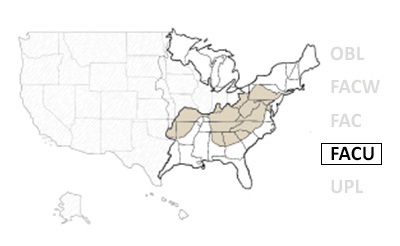Species Synonym(s): None
Common Name(s): Chinese honeysuckle
Family: Caprifoliaceae (Honeysuckle Family)
Family Synonym(s): None
Native Range (GRIN):
Selected images from Bugwood.org
Landscape Ornamental Use (GRIN): Yes
All Uses (GRIN): Ornamental, Potential seed contaminant
Summary: Japanese honeysuckle (Lonicera japonica) is a Terrestrial/Wetland species.
Mid-Atlantic Coastal Plain regions

Mid-Atlantic Piedmont and Mountain regions

Northern parts of PA and NJ (and beyond)


OBL (Obligate wetland): Almost always occurs in wetlands (estimated probability > 99%) under natural conditions

FACW (Facultative wetland): Usually occurs in wetlands (estimated probability 67% - 99%), but occasionally found in non-wetlands

FAC (Facultative): Equally likely to occur in wetlands (estimated probability 34% - 66%) or non-wetlands

FACU (Facultative upland): Usually occur in non-wetlands (estimated probability 67% - 99%), but occasionally found in wetlands (estimated probability 1% - 33%)

UPL (Obligate upland): Occur almost always (estimated probability > 99%) in non-wetlands under natural conditions
| Kingdom: Plantae |
| Phylum: Magnoliophyta |
| Class: Magnoliopsida |
| Subclass: Asteridae |
| Order: Dipsacales |
| Family: Caprifoliaceae |
| Genus: Lonicera |
| Subject: Lonicera japonica Thunb. |